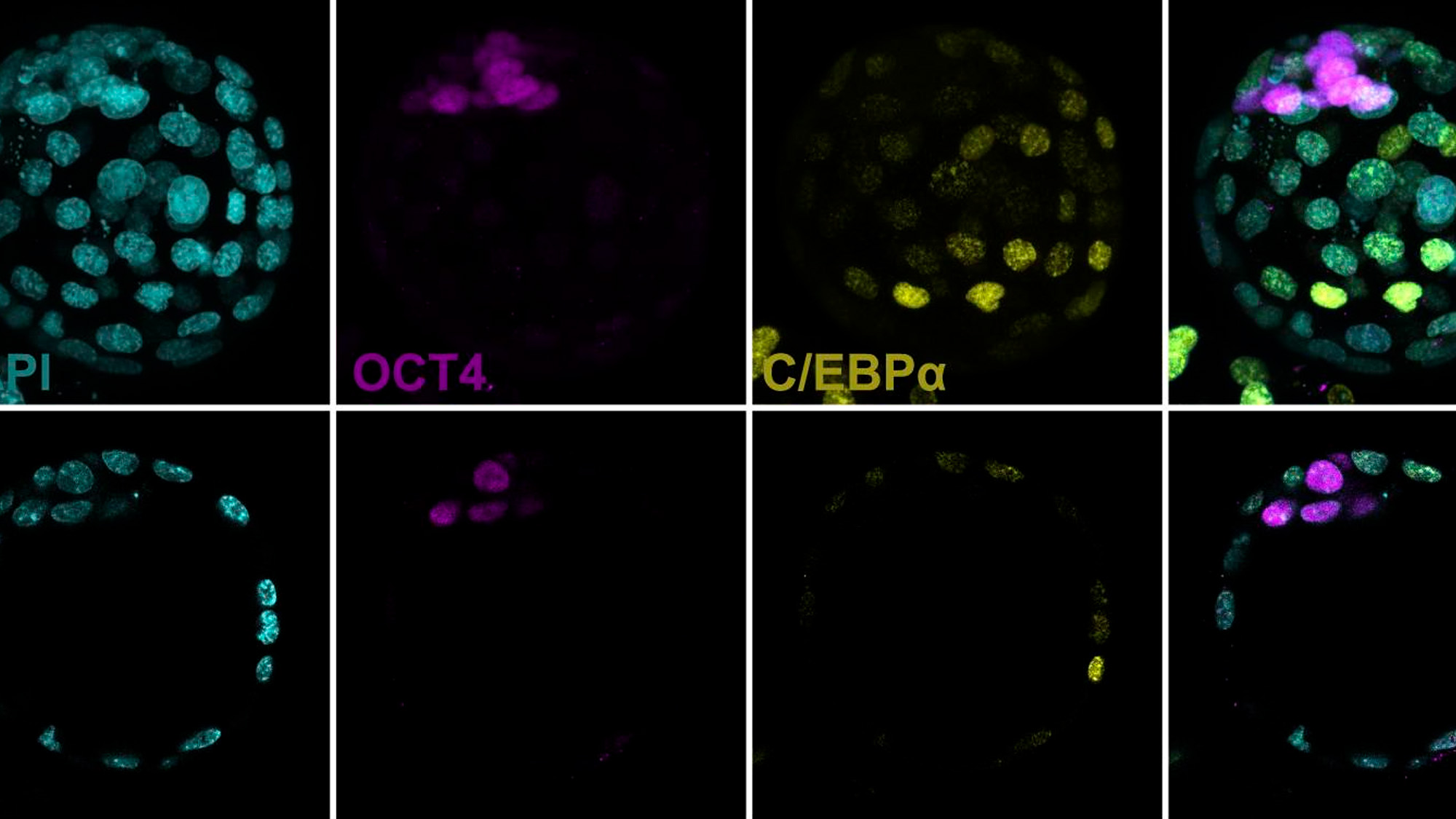This image of very early mouse embryos belongs to a recent study by the scientific team of the Center for Genomic Regulation (CRG) led by Thomas Graf, which has discovered the essential role of the cytosine IL-6 in cell differentiation in early mammalian embryonic stages. According to this study, the IL-6 protein, known to act during the immune response triggered by bacterial infection, also appears to play an important role in mammalian embryonic development.
Previously, the team had observed that the C/EBPa protein, which is involved in the dedifferentiation of adult cells into pluripotent cells, requires IL-6 to do so, and in turn, C/EBPa regulates the expression of the cytosine. This discovery led them to think that these molecules could also be involved in the process of (pluripotent) stem cell formation during embryonic development.
Specifically, they studied how two tissues are formed during development: the trophectoderm, the outer layer of the embryo that will become the placenta, and the inner cell mass, which will give rise to the structures of the embryo. The results showed that both C/EBPa and IL-6 are expressed in the outer layer, and that in the inner layer the IL-6 receptor is expressed. They were also able to prove that low levels of IL-6 delay the progress of the embryo. The results show, for the first time, that in embryonic development there is communication from the trophectoderm to the inner layer, and that, surprisingly, this is mediated by a molecule that, in adults, participates in inflammation.
“This discovery raises the possibility that the C/EBPa IL-6 signaling pathway regulates other genes restricted to the trophectoderm and may act as a driver of the development of this tissue”
Marcos Plana, study first author (CRG)
Although the experiments in the study were performed with cell cultures and mouse embryos, the results suggest that the same process could occur in humans.
Plana-Carmona, M., Stik, G., Bulteau, R., Segura-Morales, C., Alcázar, N., & Wyatt, C. et al. (2022). The trophectoderm acts as a niche for the inner cell mass through C/EBPα-regulated IL-6 signaling. Stem Cell Reports. doi: 10.1016/j.stemcr.2022.07.009







